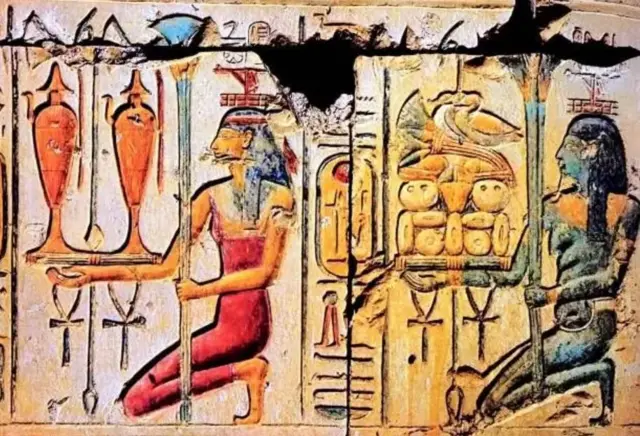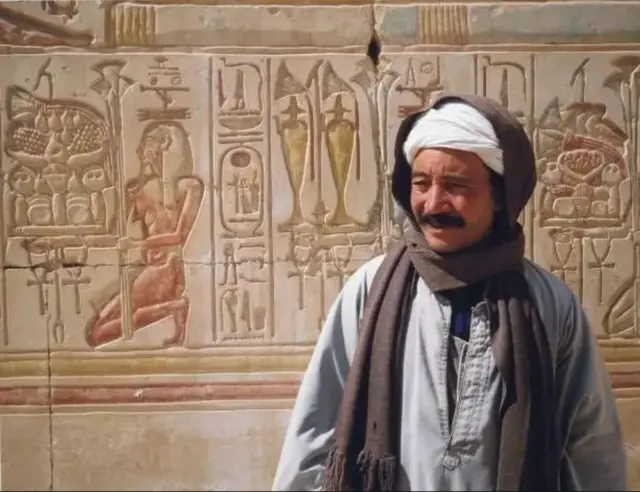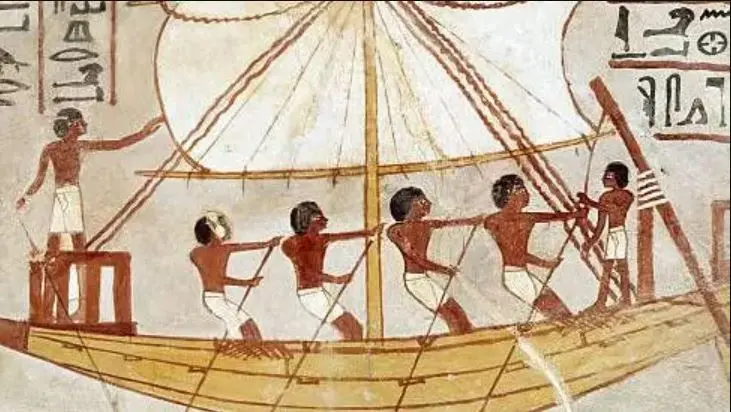Ancient Egyptians’ ‘Qibla’ at Abydos where the purpose of the ‘Hajj’ was to make the afterlife eternal.
Hajj is a religious practice whereby pilgrims travel to a holy place to perform specific religious rituals. This custom is not only limited to Islam but its concept existed in various ancient civilizations.
People believed that visiting holy places and performing associated rituals would bring them prosperity, spiritual purification and the pleasure of the gods.
The ancient Egyptians associated the pilgrimage to the city of Abydos (in present-day Sohag province) with the worship of the god Osiris. They believed that this ‘Hajj’ would make the journey to the afterlife safe. Rituals associated with this pilgrimage included funeral processions and sacrifices.
The city was of great importance to Egyptian pilgrims who sought to be buried near the tomb of Osiris at Abydos.
Those who could not afford to be buried in Abydos placed plaques with their names, titles and prayers there.
According to the World Heritage Site, Abydos was a pilgrimage site for the pharaohs.
The site is part of Egypt’s provisional list of World Heritage sites.
Abydos has been a holy city since the time of the First Egyptian Empire. This archaeological site includes the remains of the city, the pyramid of Queen Tetishiri, a funerary complex, a sarcophagi, and a roofed temple.
Apart from this, royal tombs have also been discovered in Umm Al-Qa’ab.
Worship of Osiris
Abydos is located near the city of Al-Balina in Sohag Province, Egypt. This city is called as ‘Abdu’ in ancient Egyptian hieroglyphics. It was a major religious center dedicated to Osiris, the ancient Egyptian god of the afterlife.
Abydos dates back to the time of the first royal dynasty of Egypt. At that time it had the status of a local religious center.
With the unification of Egypt and the establishment of the First Empire, Abydos became an important place for the pharaohs. There are also the tombs of ‘Umm Al-Qaab’ in which the kings of the first and second dynasties are buried.
According to Encyclopaedia Britannica, the tombs of Umm al-Qa’ab also contain pottery, royal insignia, ivory objects, and names of kings from before the First Dynasty.
The inscriptions here show that the ancient Egyptian language had reached a high level at an early period.
The mud brick buildings near the desert were used as burial places for the kings of the first and second dynasties. Wooden boats covered with white clay bricks have also been discovered here, indicating the importance of funeral rites during this period.
The ritual pilgrimage to Abydos dates back to Egypt’s oldest dynasty and grew in importance with each era.

According to UNESCO’s website, the pilgrimage to Abydos reflects changes in religious beliefs and the increasing importance of Osiris with each era, who gradually became the deity of the afterlife and resurrection.
The pilgrimage was a sacred spiritual journey full of religious rituals and expressive symbols that pilgrims came from all over Egypt to participate in.
Pilgrims reached Abydos by foot or by boat along the Nile. This ‘Hajj’ started on the eighth day of the first month and continued till the 26th of the same month.
During this time pilgrims participated in symbolic funeral processions that recounted the death and resurrection of Osiris. These processions would start from Karnak Temple in Thebes and end at Abydos.
According to tradition, Osiris was killed by his brother Set, but Isis resurrected him. The whole event was considered a symbol of the cycle of life, death and rebirth.
Upon arriving at Abydos, pilgrims would make an offering to Osiris, which included animal sacrifices as well as food and drink. The purpose of these sacrifices was to gain the pleasure of the gods and make life after death eternal. Pilgrims used to inscribe their names and prayers on the stone tablets and leave them in the temple.

Path to another world
The Egyptians believed that Abydos was a ‘gateway’ to the afterlife and that Osiris buried there could ensure resurrection and eternal life.
These funeral rites were intended to appease Osiris and give hope to the dead in the afterlife.
The pilgrimage to Abydos reflected the ancient Egyptians’ beliefs in the afterlife.
By building temples there, pharaohs of all ages sought to justify their rule and confirm their status as descendants of the gods.
In the Old Kingdom, the patron saint of tombs was the jackal deity Khenti Imentio. With the establishment of the Fifth Dynasty, the worship of the god Osiris gradually increased and thus Abydos became a major center of worship of this god.
The temple of Seti I is one of the most prominent landmarks of the Nineteenth Dynasty. The walls of this temple are decorated with elaborate designs depicting sacrifices by Atti I and his son Messis II.
According to the website of the American Research Center in Egypt, this temple is not in the rectangular shape of ordinary temples, but was built in the shape of the English letter ‘L’. Limestone has been used in its construction.
The temple was completed after the death of Seti I during the reign of his son Ramesses II.
Behind the temple of Seti I is another small temple called Osirion. It is a symbolic tomb of Oresis. It has a subterranean hall with a platform supported by 10 pillars which used to have water on all four sides. The temple is an architectural marvel that reflects the engineering skills of the ancient Egyptians.

Religious and Cultural Significance of Abydos
Excavations at Abydos have highlighted the city’s long history and role as a religious center. The discovery of the tomb of Dejar, one of the early dynasty kings, in the tombs of Umm al-Qa’ab has revealed many details about royal burials and the early formation of the Egyptian state.
In the year 2014, the tomb of Pharaoh Senbekai was discovered here. Archaeologists did not know much about their empire before. It illustrates the importance of Abydos and its role in Egyptian history.
Abydos is part of ancient Egypt’s religious and cultural rich history and its temples, tombs and legends reflect the spiritual significance of the site to the ancient Egyptians.
Abydos’ cultural and symbolic heritage extends to Egyptian art, literature and religious practices. Images of Osiris, Isis, and Horus in temples and tombs throughout Egypt reflect the centrality of the myth of Abydos to Egyptian culture.

It is worth mentioning here that many such rituals were found in ancient civilizations. In the Babylonian civilization, the city of Nippur was an important religious center where people visited the temple of Anil. In the Sumerian civilization, the temple of Goddess Nana in the city of Ur has a similar significance.
In ancient Greece, the pilgrimage to Delphi was one of the most popular religious pilgrimages. Pilgrimages to Delphi included sacrifices and participation in the Pythian Games. The Pythian Games were held every four years.
In ancient Rome, pilgrimages to sites such as the Temple of Vesta, the Temple of Jupiter, and the Temple of Demeter were part of Roman religious rituals.
In all ancient civilizations, pilgrimages have always been important. It was considered a worship that connected people with the gods and strengthened spiritual and social ties. The various rituals involved in visits to holy places reflected the religious beliefs of each civilization.


